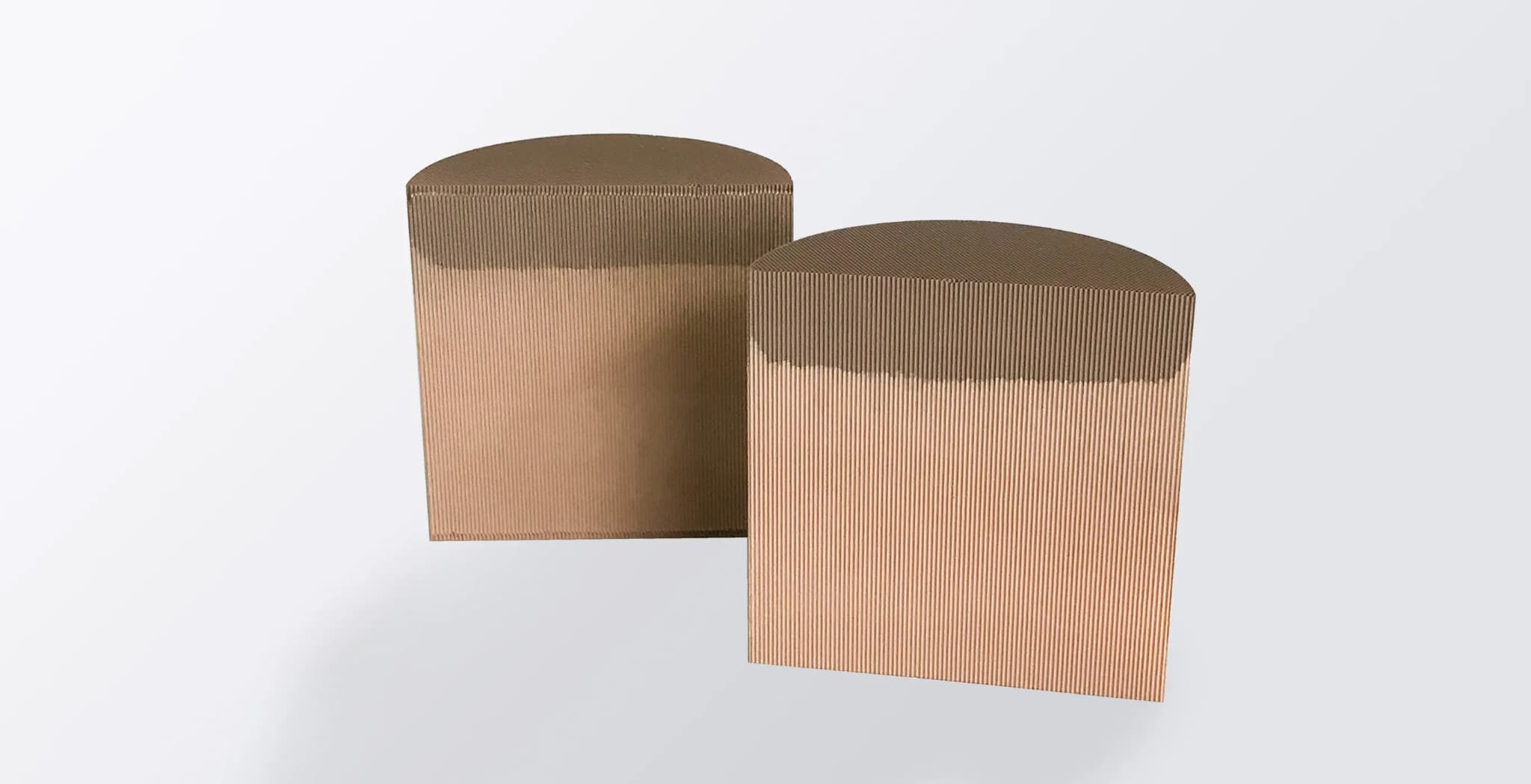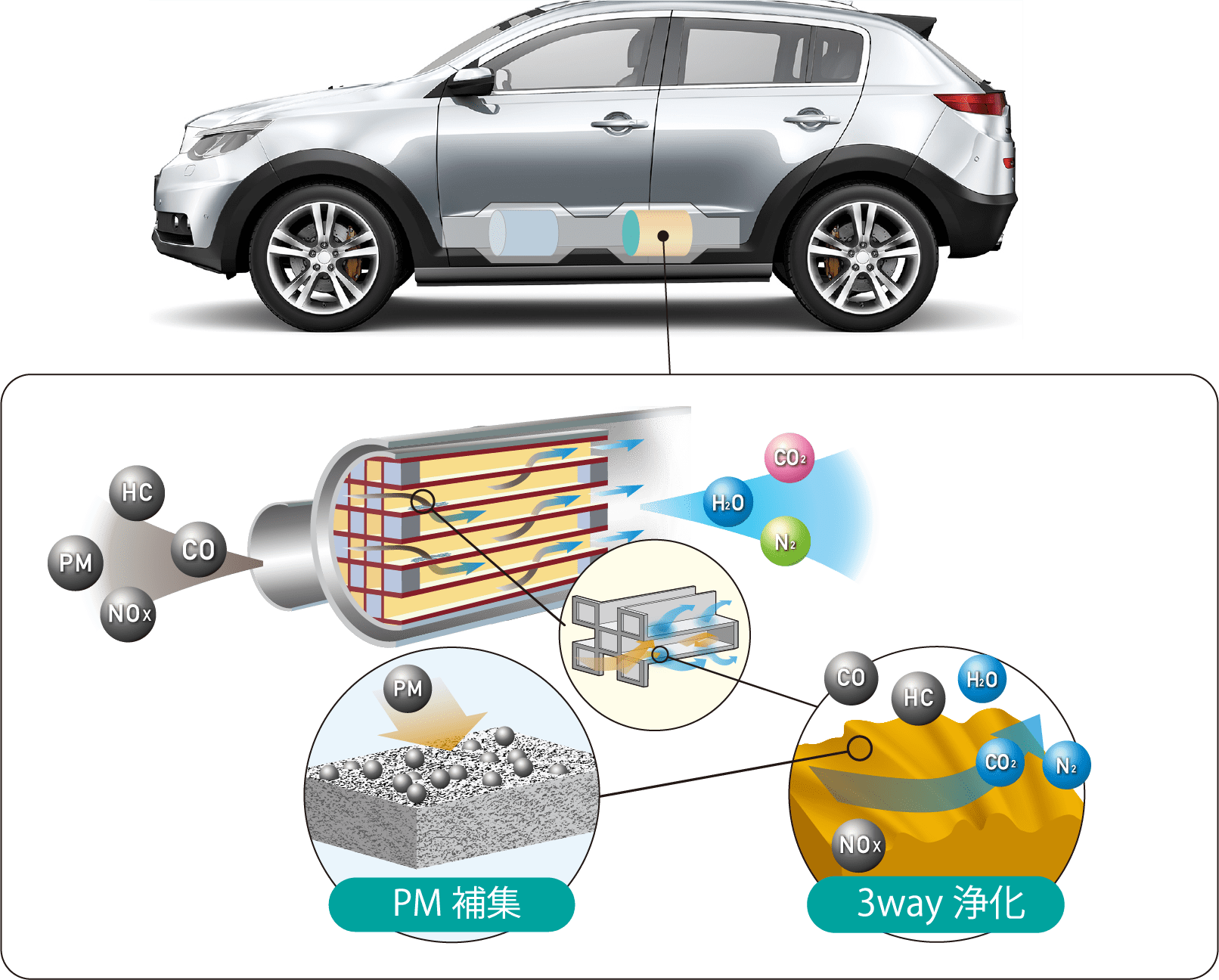- Home
- Products
- Gasoline engine catalysts
- GPF catalysts
GPF catalysts
Gasoline Particulate Filters (GPF) are required to comply with Europe's "Euro 6", China's "Country 6", and US "LEVⅢ" regulations. By coating the GPF with a 3-way catalyst, Cataler has developed an advanced after-treatment technology that purifies harmful exhaust substances - hydrocarbons (HC), carbon monoxide (CO) and nitrogen oxides (NOx) - and reduces particulate matter (PM)* emissions.
* Particulate Matter (PM)
Micron-sized solids such as soot, and liquid microparticulate matter.

Exhaust gas regulations are becoming more stringent year by year
In the past, PM emitted from engines of direct-injection gasoline vehicles was regulated by "emission mass". However, as the regulation of emission mass is difficult to influence in numerical values for ultra-fine particles, which easily penetrate the human body and are feared to affect health, the "PN* regulation" was introduced, which regulates particles by 'number of emitted particles'.
* Particulate Number (PN) Regulation
The number of very fine PM are counted, and kept within a standard value. Until now, it was required that the weight of PM emitted was within the standard value. The PN regulation, on the other hand, measures the amount of particles emitted, not by weight, but by the number of particles.
In order to comply with PN regulations, unlike PM mass regulations, it is necessary to reduce the number of fine particulates emitted.
A gasoline particulate filter (GPF*), which has the function of collecting particulate matter emitted from the engine, is a promising after-treatment device for gasoline direct injection vehicles.
GPF (Gasoline Particulate Filter)
A ceramic filter that removes PM emitted from a gasoline direct injection gasoline engine. This is a structure of channels closed alternately on one or the other side, and is built into the exhaust tube. As the exhaust gases from the engine pass through the porous walls, harmful substances such as PM are deposited on their surfaces.


GPF with purifying function of 3-way catalyst
However, adding a GPF increases the required installation space and cost. Therefore, we are developing a "GPF catalyst" that adds the purification function of a 3-way catalyst to a GPF. By providing a GPF catalyst that can replace the 3-way catalyst installed "close coupled the engine" or "under the floor" of direct-injection gasoline passenger cars, rather than simply by adding a GPF, it is possible to reduce installation space and the cost.
Photo of after-treatment system with GPF
*TWC: 3-Way Catalyst
Photo of GPF catalyst

There are two types of GPF catalysts: low pressure drop type and high PN collection type.
Any catalyst coating method can be used to apply without exceeding the particulate regulation values of each country. The low pressure drop type contributes to engine output improvement by suppressing increase in pressure drop, and the high PN collection type can increase the PN collection rate.
Difference between low pressure drop type and high PN collection type
- Comparison of pressure drop

- Comparison of PN collection rate

Cataler will combine the 3-way catalyst technology and coating technology that we have developed since our foundation to propose optimal GPF catalysts that meet customer needs. In addition, we will enhance our lineup of GPF catalysts in preparation for increasingly stringent exhaust gas regulations (Euro 7, China 7, etc.).
Awards
- 2020Toyota Motor Corporation "Technology & Development Award"
- 2019Toyota Motor Corporation "Technology & Development Award"
- 2018Toyota Motor Corporation "Technology & Development Award"


 JAPANESE
JAPANESE

 Select Language
Select Language English
English











